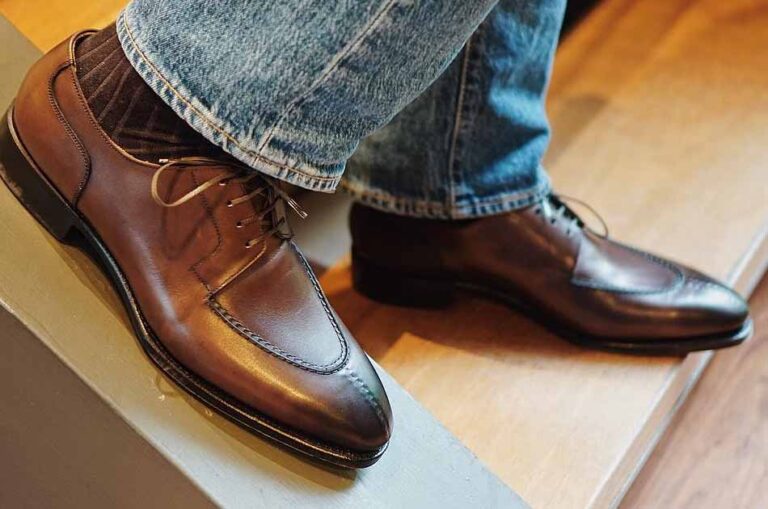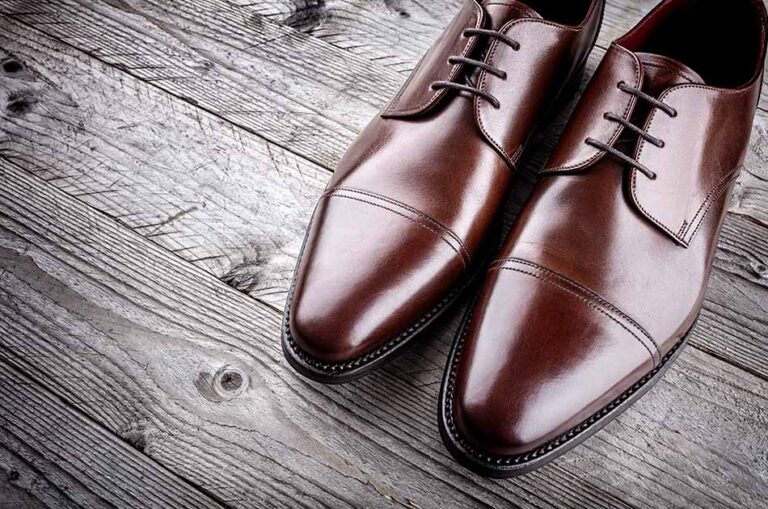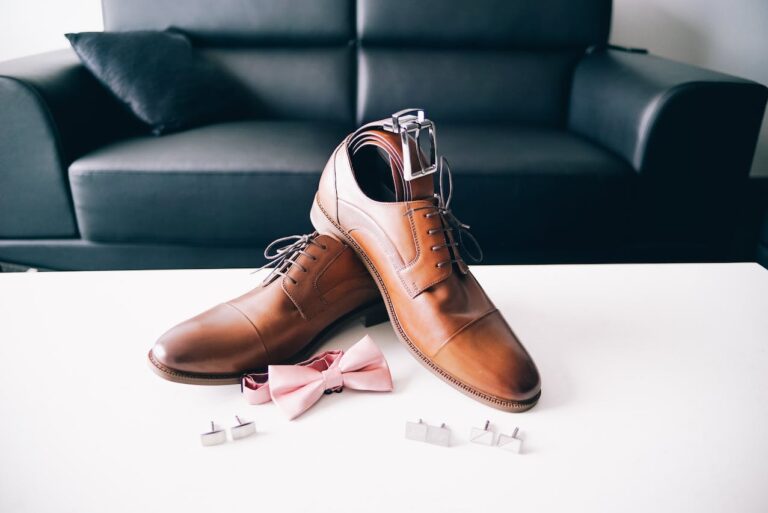Derby shoes have a rich history and are known for their timeless style. From their origins in the 19th century to their modern-day popularity, derby shoes have become a staple in many wardrobes.
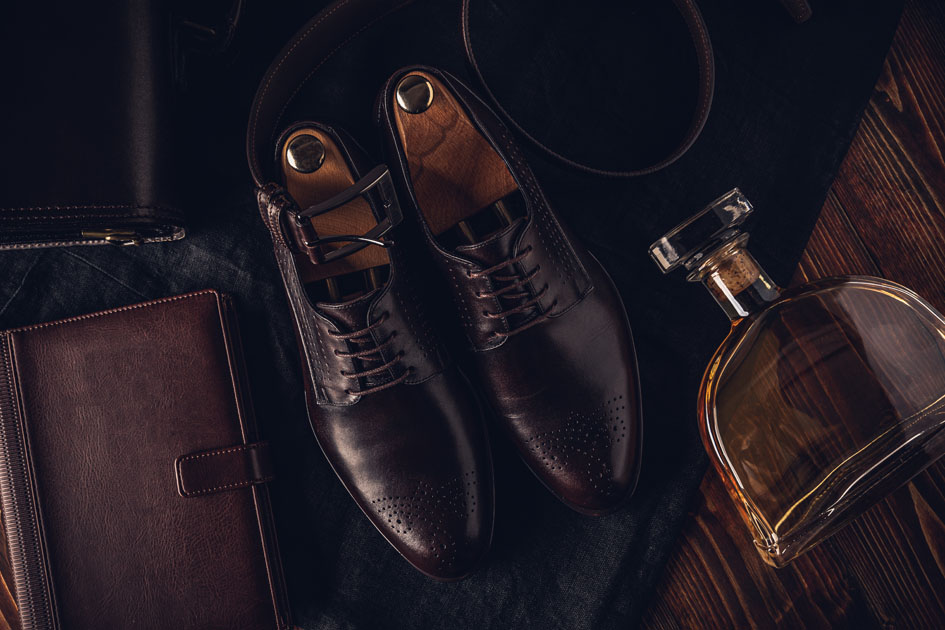
With various styles and variations available, it’s important to understand how to lace derby shoes for both comfort and style.
Whether you prefer a classic straight lacing or a more intricate crisscross pattern, the way you lace your derby shoes can make a significant difference in how they fit and look on your feet.
Understanding Closed Lacing vs Open Lacing
Difference between Closed Lacing and Open Lacing Systems
Closed lacing and open lacing are two different systems used to lace derby shoes.
Closed lacing has the eyelets stitched under the vamp, creating a more formal and sleek look. It provides a secure fit and is often seen in dress shoes.
Open lacing, on the other hand, has the eyelets stitched on top of the vamp. This creates a more casual and relaxed appearance. It allows for easier adjustment and is commonly found in casual or sporty derby shoes.
Pros and Cons of Closed Lacing on Derby Shoes
Closed lacing offers several advantages when it comes to derby shoes:
- Provides a sleek and elegant appearance suitable for formal occasions.
- Offers a snug fit that keeps your feet secure.
- Gives a polished look that complements business attire.
However, closed lacing also has its limitations:
- Can be less adjustable compared to open lacing.
- May not accommodate wider feet as well due to limited flexibility.
Advantages and Disadvantages of Open Lacing on Derby Shoes
Open lacing brings its own set of benefits to derby shoe wearers:
- Allows for easy adjustment to accommodate different foot shapes.
- Provides a more relaxed and casual style suitable for everyday wear.
- Offers greater comfort by allowing more flexibility around the instep.
But open lacing does have some drawbacks:
- Can appear less formal or professional than closed lacing.
- May not provide as secure of a fit as closed laced shoes in certain situations.
Mastering Straight Bar Lacing on Oxford Shoes
Step-by-step Instructions for Straight Bar Lacing Technique
To achieve a sleek and sophisticated look with your oxford shoes, mastering the straight bar lacing technique is essential. Follow these step-by-step instructions to lace your derby shoes using this method:
- Begin by inserting the shoelace through the bottom eyelets of the shoe, ensuring that both ends are of equal length.
- Take one end of the shoelace and insert it diagonally into the opposite eyelet, creating a straight bar across the shoe’s tongue.
- Repeat this process with the other end of the shoelace, creating another straight bar parallel to the first one.
- Continue lacing in this manner until you reach the top eyelets of the shoe, making sure to maintain an even tension throughout.
Benefits of Straight Bar Lacing for a Sleek Look on Derby Shoes
Straight bar lacing offers several benefits when it comes to styling your derby shoes shoes:
- Sleek Appearance: The straight bars created by this lacing technique give your shoes a clean and elegant look, perfect for formal occasions or professional settings.
- Symmetry: The parallel lines formed by straight bar lacing add symmetry to your footwear, enhancing its overall aesthetic appeal.
- Versatility: This lacing style works well with various types of oxford shoes, including plain toe and cap toe designs.
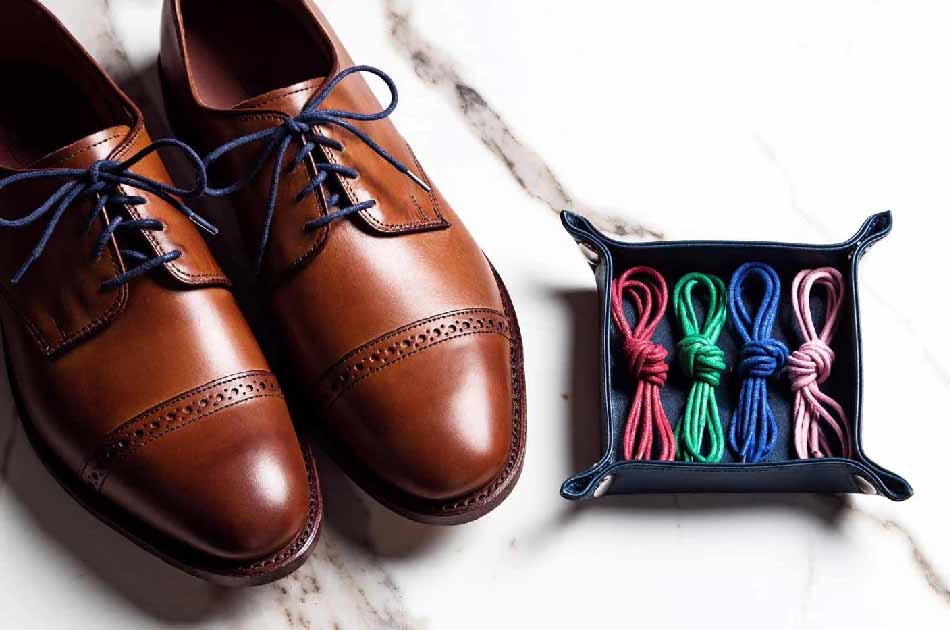
Tips for Achieving Even Tension with Straight Bar Laces
To ensure that your straight bar laces are evenly tensioned and properly secured, consider these tips:
- Equal Lengths: Start with shoelace ends of equal length to maintain symmetry in your lacing pattern.
- Tightness: Adjust the tightness as you lace up each section to achieve consistent tension throughout.
- Practice Makes Perfect: It may take some practice to get the tension just right, so don’t be discouraged if it doesn’t look perfect on your first attempt.
Mastering the straight bar lacing technique will elevate the style and elegance of your oxford shoes. Practice this method and enjoy a sleek and sophisticated look for any occasion.
Choosing the Right Laces for Dress Shoes
Factors to Consider When Selecting Laces for Dress Shoes
There are a few factors you should consider. First, think about the type of material used in the shoelaces.
Flat shoelaces are commonly used for dress shoes and provide a sleek and elegant look. They are also less likely to come undone compared to round laces.
Different Types of Materials Used in Shoelaces and Their Characteristics
Shoelaces can be made from various materials, each with its own characteristics. Here are some common types:
- Cotton: Cotton laces are soft, comfortable, and easy to tie. They come in different colors and work well with most dress shoes.
- Leather: Leather laces add a touch of sophistication and durability to your dress shoes. They may require more care but offer a classic look.
- Waxed: Waxed laces have a coating that makes them resistant to water and fraying. They maintain their shape well and are ideal for formal occasions.
- Synthetic: Synthetic laces like polyester or nylon are durable and easy to clean. They come in various colors and patterns, allowing you to customize your style.
Matching Lace Colors with Shoe Colors for a Cohesive Look
To achieve a cohesive look, it’s important to match the color of your laces with your shoe color. Here are some tips:
- For black dress shoes, opt for black or dark gray laces.
- Brown dress shoes can be paired with brown or tan laces.
- If you want a contrasting look, consider using complementary colors like burgundy laces on black shoes or navy blue on brown shoes.
Remember that personal style plays a role here too – feel free to experiment with different lace colors that suit your taste!
Step-by-Step Guide for Lacing and Bow Tying
Lacing Your Derby Shoes
To lace your derby shoes, follow these simple steps:
- Straight Bar Lacing: Start by inserting the shoelaces into the bottom eyelets of your shoes, leaving equal lengths on both sides. Cross the laces over each other and thread them through the next set of eyelets. Continue this pattern until you reach the top, ensuring the laces are evenly tightened.
- Criss-Cross Lacing: Begin by inserting one end of the shoelace into the bottom left eyelet and the other end into the bottom right eyelet. Cross one lace over to the opposite side and thread it through the next eyelet. Repeat this process until you reach the top, making sure to tighten evenly as you go.
- Over-Under Lacing: Start by threading one end of the shoelace through an eyelet from underneath while threading the other end through from above in a criss-cross pattern. Repeat this process for each set of eyelets until you reach the top, adjusting tightness as needed.
Tying a Bow Knot
Follow these easy steps to tie a bow knot with your shoelaces:
- Cross Over: Take one lace and cross it over the other lace, forming an “X” shape.
- Loop Around: Take one lace and loop it around behind and through the opening created by crossing over.
- Tighten: Pull both ends of the laces to tighten your bow knot securely.
Troubleshooting Common Issues
Here are some common issues you may encounter while lacing or tying bows, along with their solutions:
- If your shoes feel too tight or loose after lacing, adjust tension by tightening or loosening accordingly.
- If your bow knot keeps coming undone, double-knot it or try using a different lacing technique for a more secure knot.
- If your shoelaces are too long, consider using shorter laces or tucking the excess length into your shoes.
Remember, practice makes perfect! Experiment with different lacing techniques and bow styles to find what works best for you and your derby shoes.
Exploring Cross Lacing Techniques for Derby Shoes
Overview of Different Cross-Lace Patterns
Cross lacing is a popular technique for styling and securing derby shoes. There are several cross-lace patterns that you can try to achieve different looks. Some common patterns include the Criss-Cross, Straight Bar, and Over-Under lacing methods.
How Cross-Laced Derbies Offer a Secure Fit and Added Style
Cross-laced derbies not only provide a secure fit but also add a touch of style to your footwear.
The criss-cross pattern creates multiple points of tension, ensuring that your shoes stay snugly in place throughout the day. Moreover, the diagonal lines formed by the laces give your shoes an eye-catching aesthetic appeal.
Step-by-Step Guide to Achieve Popular Cross-Lace Designs
- Criss-Cross Lacing: Start by threading one end of the lace through the bottom eyelets, crossing over to create an ‘X’ shape. Continue this pattern until reaching the top eyelets, making sure to pull the laces tightly at each crossover point.
- Straight Bar Lacing: Begin by inserting one end of the lace through the bottom eyelets from inside out on both sides. Then, thread each end straight across horizontally, alternating sides until reaching the top eyelets.
- Over-Under Lacing: This method involves weaving one end of the lace over and under each set of eyelets diagonally until reaching the top. Repeat this process with the other end in an opposite direction.
Remember to adjust the tightness as you go along to ensure a comfortable fit without restricting movement or causing discomfort.
By experimenting with these different cross-lace patterns, you can customize your derby shoes according to your personal style preferences and create unique looks that stand out from the crowd!
Perfectly Laced Derby Shoes
Congratulations! You now have a solid understanding of lacing techniques for your derby shoes.
From mastering the straight bar lacing on oxford shoes to exploring cross lacing techniques, you are well-equipped to create that perfect look.
The way you lace your shoes makes a significant difference in both style and comfort.
To further enhance your shoe game, experiment with different lacing patterns and colors to add a personal touch. Don’t be afraid to think outside the box and try unique combinations.
And always remember to choose the right type of laces for your dress shoes, as they can elevate your overall appearance.
Now go ahead and put your newfound knowledge into practice. Lace up those derby shoes with confidence and step out in style!
FAQs about How to Lace Derby Shoes
How tight should I lace my derby shoes?
It’s important to find the right balance when lacing your derby shoes. Avoid lacing them too tightly as it can cause discomfort and restrict blood circulation.
On the other hand, if they’re too loose, you may experience instability while walking. Aim for a snug fit that allows some flexibility without being overly tight or loose.
Can I use different colored laces on my derby shoes?
Absolutely! Using different colored laces is an excellent way to personalize your derby shoes and make them stand out.
Experiment with complementary or contrasting colors to add a unique touch to your footwear.
Are there any specific lacing techniques for wide feet?
If you have wider feet, consider using open-lace techniques like the straight bar or criss-cross methods. These techniques allow more room across the instep, providing a better fit for wider feet.
How often should I change my shoelaces?
The frequency of changing shoelaces depends on various factors such as usage, material quality, and maintenance.
However, as a general guideline, it’s recommended to replace your shoelaces every six months to a year to ensure they remain in good condition.
Can I use the same lacing technique for different shoe types?
While some lacing techniques can be used across various shoe types, it’s always best to consider the specific style and design of each shoe.
Experiment with different techniques to find the most suitable lacing method for each pair of shoes.

